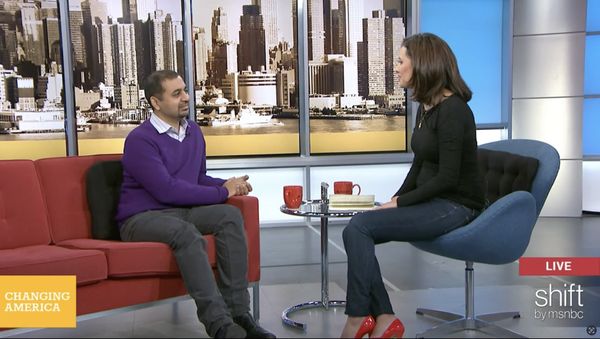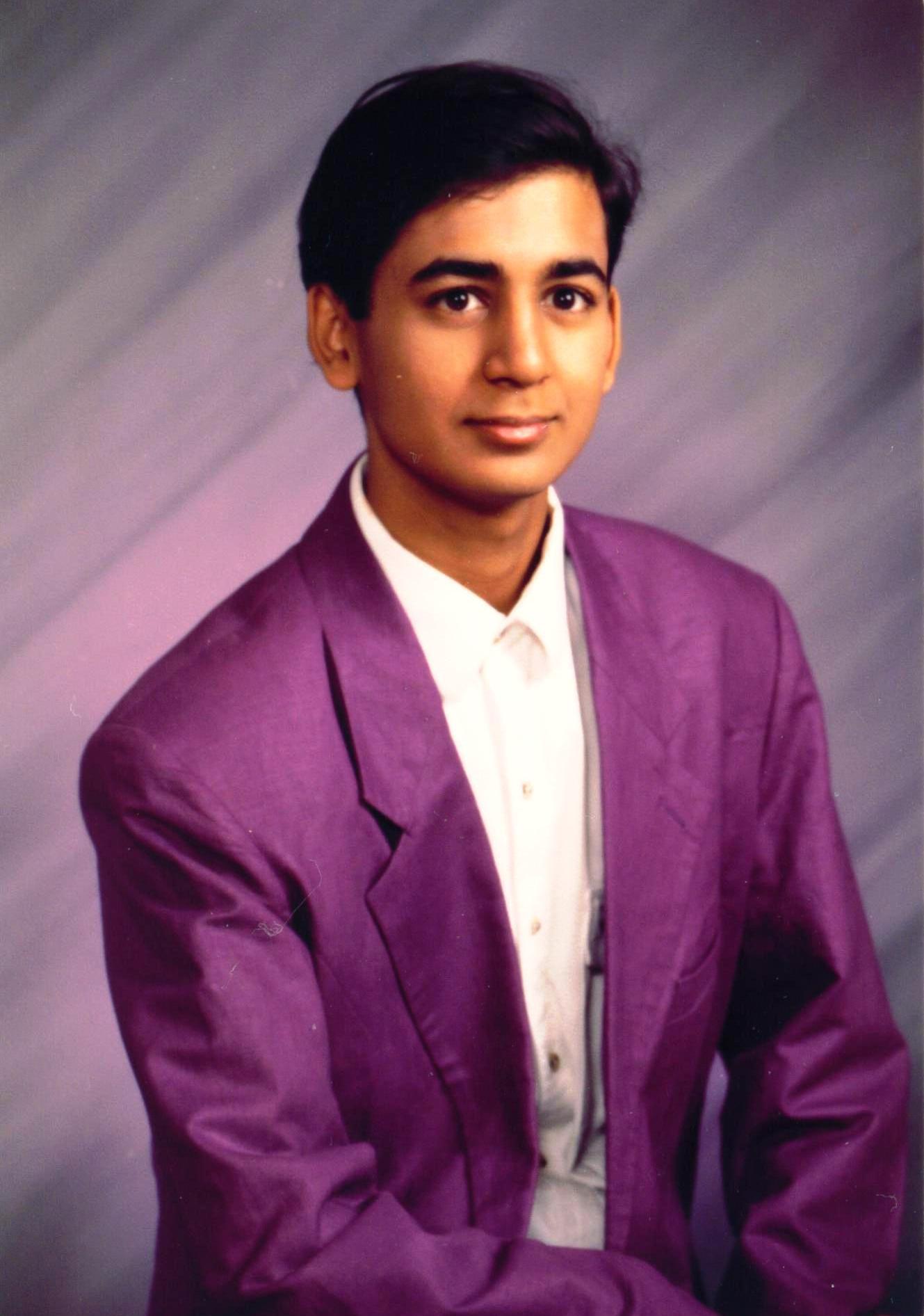
Circles
Today I went to MSNBC to tape an appearance on Maria Teresa Kumar’s new “Changing America”, part of the Shift lineup of shows that the network is trying out. It was pretty fun, and I think I came off okay, talking about how tech helps people organize:
But let me talk about something else. In that appearance, unusual for the times I’ve been on TV (or in a TV studio, as the Shift shows are primarily designed to be streamed online), I usually get some makeup applied before I go on air. Today, I did not. Makeup’s not a big deal for me; I used to wear it anyway in my teens and twenties, and it’s pretty much necessary if you want to look halfway human under the weird conditions of television lighting.
Each time I’ve been in a studio situation, though, the one thing makeup artists tend to do is to use concealer or whatever they have at hand to try to lighten the dark circles under my eyes. Now, the circles have been there my entire adult life, but as any parent can tell you, they get more pronounced once you have kids.
Being close to the end of the year, I have been reflecting on what I learned in 2014. To my surprise, the few moments when I thought I’d be putting on some makeup for today’s taping brought me vividly back to one of the most subtle but profound realizations I had this year. It was while reading, of all things, a Buzzfeed roundtable discussion of Mindy Kaling’s “Mindy Project”. This brief back-and-forth between Durga Chew-Bose and Heben Nigatu:
DCB: Another one: dark rings under my eyes. The amount of people that ask me if I’m tired all the time. I’ve never once covered the dark rings under my eyes, and worse is when white girls are like, “No that’s in”
HN: (You can’t hear me right now but I keep just saying “Mmmm” to myself and feeling all emotional.) OMG the deep-set eyes thing!
DCB: I never get my makeup done. I also barely wear any makeup, but when someone else does it, the first thing they do is put some white stuff under my eyes and smudge.
For years I’d had people work to lighten the circles under my eyes, and never once reflected on the fact that this is the way I naturally look. Nobody said the circles under my eyes looked “soulful” or “wise” or essentially anything other than “the way you look naturally isn’t the way people of other ethnicities look, so it’s wrong”. And for all my ostensible efforts to be culturally literate and self-aware, I’d never caught it.
This was particularly resonant to me because I can look back to before I was even an adult and see its antecedents. This crowd-pleaser of a photo was my senior picture in high school, taken when I was 16.

I can still vaguely remember the circumstances; I had an awful bout of the flu, despite it being summer time, and a really bad fever, well over 100 degrees, and I had to be dragged in to the photo session. But I endured it, took the photos and didn’t think about them again until they were printed up.
The photographer at the studio had lightened my skin a bit, using whatever pre-Photoshop, pre-digital methods were common at the time. Honestly, that wasn’t too much of a surprise — given where I grew up, it’s entirely possible I was the only non-white student whose senior photo they took, and they simply may not have known what to do with other skin tones.
But more surprising was that the dark circles that I knew I had under my eyes while fighting off a brutal flu were completely erased. It’s hard to tell because this scan isn’t that high-resolution, but that correction was even done at the expense of leaving my face in the photo looking a bit plastic and fake. It was essentially decided that it was better I look unrealistic than that I show the appearance that is inevitably, and honestly, my own.
So what?
Obviously, this is hardly some stunning revelation of how a magazine cover model got photoshopped. Rather, it’s my own reflection on the fact that I never realized I had completely internalized a way of hating or even wanting to remove or undo something intrinsic to myself. I learned it so young that I had never understood to question it. And I’d certainly never considered that it might be okay, or acceptable, or maybe even attractive.
In truth, it doesn’t matter much. My self-image about my appearance these days is grounded in the idea that it’s politically radical and meaningful to assert that Indian men are attractive and sexy and appealing, and so that’s my official position on the matter. (It helps that we have statistical evidence in the booming population of South Asia that hundreds of millions of people agree.) So having an epiphany about some aspect of my appearance doesn’t actually change anything.
a year-end list, but of everything you've unlearned
— Durga Chew-Bose (@durgapolashi) December 9, 2014
Instead, this was a great chance to realize how much I don’t know about myself, and my own cultural context. If I were my younger, more fragile self, this might have been an upsetting or hurtful realization. But instead, it was just a bit of an a-ha moment, a realization of how much I still have to learn. Or, put better, how much I have to unlearn.
And the best response I can think of to this realization is to actually share what I’ve learned and unlearned. Unsurprisingly, Durga covered that, too:
[T]he very desire to write it all down, to trust that my experience and what I might share of it has merit, is a certainty that is a foreign prerogative. Often, I’ll be thinking aloud with friends or deliberating on ideas that have been simmering or on luckier occasions, ideas that have been connecting, and a friend will excitedly chime in, “You should write about that.” But the impulse to write it all down is at most secondary or tertiary, and generally, not even on my radar.
Maybe this year is more about what I unlearned and what I remembered than about what I learned.